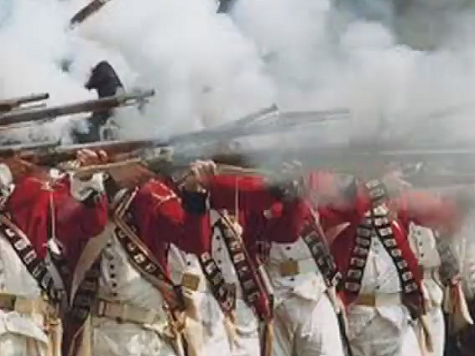Recent debate regarding the 2nd Amendment to the United States Constitution has been heated, with many on the left calling for its repeal. Detractors of the amendment are quick to oversimplify with statements that “the British are not coming” or that the Constitution does not guarantee the right to duck hunt.
Lost in the discussion is the behavior of governments towards their citizens or the civilian population of countries that have been conquered over the arc of recorded history and the logic that informed our Founders to include the right to keep and bear arms in the Constitution.
With the exception of the Athenian democracy and the Roman Republic, the ideas of individual freedom and the rule of law were not recognized until the Magna Carta in England. With the rise of the Italian city-states during the Renaissance, particularly Florence, individuals began to secure limited individual rights, freedoms, and protection by law; this was by no means the norm.
During that same time, the Aztecs were brutally executing prisoners on a mass scale. In Carnage and Culture, Victor Davis Hanson’s book on the history of warfare and its cultural context, there is a chapter about the Aztec civilization in Central America. The Aztec rulers practiced a ritualized form of execution of prisoners in a highly organized manner. In one four day period in 1487, the Aztecs killed over 80,400 prisoners at a rate that exceeded the efficiency that the Nazis exterminated prisoners in Auschwitz or Dachau.
In Colonial America, the British occupation army was charged with, among other things, enforcing the taxation of American colonials without their consent. As part of the occupation and enforcement of English tax laws, British troops were sent to Lexington and Concord to find and confiscate military supplies stored by the colonial militia.
When the founders drafted the Constitution and its amendments, the Boston Massacre and the reality of their own rulers taxing them without representation as well as confiscating the means to protect themselves were recent memory.
By 1910, many in Europe, Asia, and the Americas felt that their societies had reached a high point in culture and freedom, with their governments beginning to recognize and codify basic human rights and the rule of law, albeit at different levels. Yet a mere 50 years later, nascent democracies in Russia, Germany, Turkey, China, and Japan had all been overtaken by totalitarian dictatorships which institutionalized the killing of their own or conquered citizens at a scale unimaginable in 1910. Indeed, government sanctioned killing of unarmed civilians continued with the Killing Fields in Cambodia in the 1970’s to the mass murders in Srebrenica in the 1990’s.
The brutal murder of school children in Newtown by a lone individual is horrific and unforgettable. Yet, every day throughout Nazi occupied Eastern Europe, groups of unarmed civilians were rounded up and executed; fully sanctioned by the Nazi government.
We tend to think of governments in a benign manner; minder of the infrastructure, deliverer of the mail, dispenser of the free stuff, “the only thing we all have together.” Those lying face first in mass unmarked graves throughout the world would disagree.

COMMENTS
Please let us know if you're having issues with commenting.